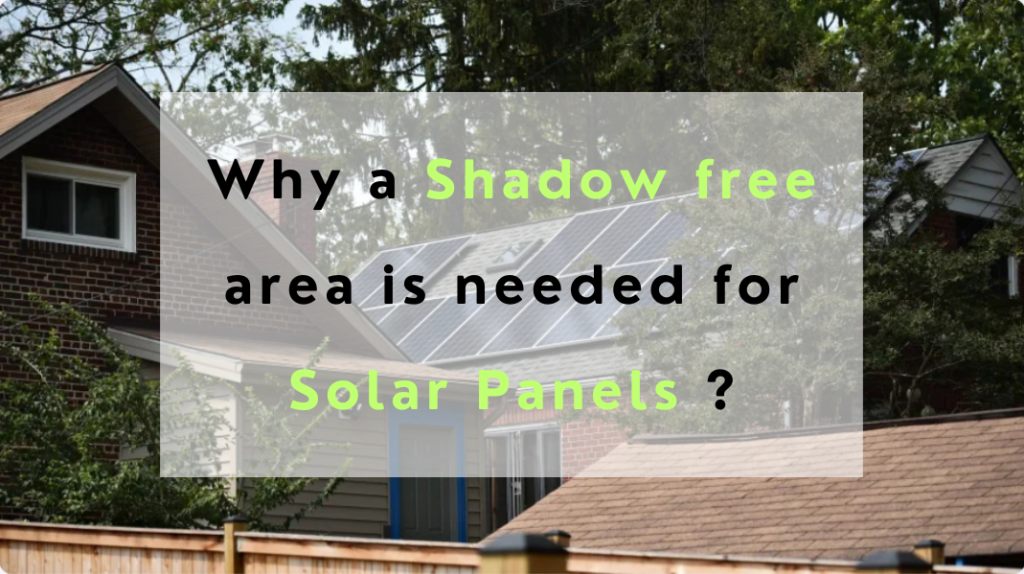The world’s transition to sustainable energy relies heavily on solar power plants, which harness the sun’s energy to create electricity. However, the efficiency of these plants is significantly affected by one often-overlooked factor: shadows. Shadows cast on solar panels can have a profound impact on energy production.
In this blog, we’ll delve into why shadowing matters in a solar power plant, exploring the consequences of shadows and the strategies used to mitigate their effects.
Understanding Shadowing:
Shadowing occurs when an object obstructs sunlight from reaching the solar panels, casting a shadow over the photovoltaic (PV) cells. These obstructions can come from nearby structures, vegetation, or even the panels themselves in certain layouts. The presence of shadows can lead to a reduction in energy output, affecting the overall efficiency of the solar power plant.
Different types of shadows forming on solar plants
Link : https://www.nrel.gov/docs/fy12osti/54876.pdf
Key Reasons Why Shadowing Matters:
- Reduced Energy Production: Shadows directly result in reduced sunlight exposure on solar panels, leading to low energy production. Even partial shading can significantly impact the output of the affected panels, affecting the overall efficiency of the solar power plant.
Effects of shading on the solar panel
Link : https://mcisolutions.ca/effect-of-shade-on-solar-panels/
- Hotspot Formation: Shadowing can cause “hotspots” on solar panels, where shaded cells within a panel can become reverse-biased and potentially overheat. This not only decreases the panel’s efficiency but can also lead to long-term damage and decreased lifespan.
Formation of the hotspot
Link : https://www.pv-magazine.com/2023/10/12/combination-of-half-cut-bifacial-solar-cell-designs-may-contribute-to-hotspot-formation/
- Panel Mismatch: In solar power plants with multiple panels connected in series or parallel, shadowing on just one panel can lead to panel mismatch. This mismatch can cause a drop in overall system performance, as the shaded panel may operate at a different voltage or current than the rest of the array.
Mismatch effects in Panels
Link : https://www.pveducation.org/pvcdrom/modules-and-arrays/mismatch-effects-in-arrays
- Impact on Bifacial Panels: Bifacial solar panels, designed to capture sunlight from both sides, are particularly susceptible to shadowing. Shadows cast on the rear side of these panels can significantly impact their performance, as they rely on reflected sunlight for additional energy production.
Mitigating the Impact of Shadows:
- Advanced Site Planning: A thorough site analysis during the planning phase helps identify potential shadowing sources. Proper orientation and spacing of panels, as well as strategic placement of structures, can minimize shadowing effects.
For further information, have a look at the attached blog
3 THINGS TO CHECK WHILE DESIGNING A SOLAR PLANT
- Smart Inverter Technology: Modern inverters equipped with advanced algorithms can mitigate the impact of shadows by optimizing power production from unshaded panels and managing voltage fluctuations caused by shadow-induced mismatches.
- Panel-level Electronics: Technologies such as power optimizers and microinverters at the panel level can mitigate the impact of shadows by allowing each panel to operate independently. This minimizes the impact of shading on the entire system.
- Regular Maintenance and Monitoring: Ongoing maintenance and monitoring of the solar power plant are essential to identify and address any shading issues promptly. This includes trimming vegetation, cleaning panels, and ensuring proper functioning of tracking systems.
Conclusion
By recognizing and addressing shadow-related challenges, we can enhance the performance and longevity of solar installations, ensuring they continue to play a vital role in the global transition to clean energy. At SafEarth, we help you understand the implications of shadows by conducting thorough shade analysis, optimizing panel tilt and orientation, and exploring advanced solutions that can pave the way for more efficient and sustainable solar power generation. In this quest for clean energy, addressing shadowing isn’t merely an option; it’s an essential step towards a brighter and more sustainable future.
Join our SafEarth marketplace to explore your options and buy your solar system from qualified installers in your area t,o make the switch easy and hassle-free.

